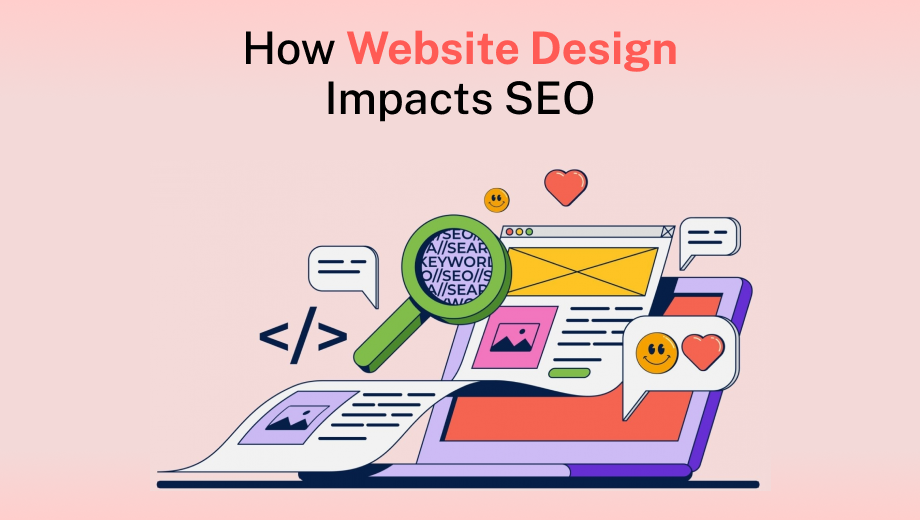The Deep-Dive Connection: How Website Design Impacts SEO
 31 May 2023
31 May 2023
 31 May 2023
31 May 2023
Website design and Search Engine Optimization (SEO) have always been viewed as separate skills. The first deals with appearances and the user experience, while the second is engaged with search engine algorithms and keywords. However, as the digital landscape has changed, so has the integration of website design and SEO. These two critical aspects have become totally linked to the success of a website.
In this blog post, we will explore in detail how website design significantly impacts your site's SEO performance, and we'll provide tips on designing your website to improve its search engine ranking.

SEO is no longer just about keyword optimization. Search engines like Google aim to enhance user experience and favor websites designed with this in mind. Simply put, if users enjoy their experience on your website, search engines will too. This is where website design comes in. The layout, visual elements, navigation, and functionality of your site all contribute to the user experience, directly impacting your website's SEO.
As of 2023, the majority of internet traffic worldwide comes from mobile devices. Search engines have adapted to this trend, with Google implementing a mobile-first indexing policy. This means that Google primarily indexes and ranks mobile content. A mobile-friendly website design isn't just about fitting your content on a smaller screen. It involves designing your site to be easily navigable and readable on a mobile device, with accessible links and buttons that are easy to tap with a finger.
Website speed is another crucial factor affecting your SEO ranking. Users expect a website to load quickly—according to Google, 53% of mobile site visits are abandoned if pages take longer than 3 seconds to load. Search engines understand this and prioritize faster websites in search results. Improving your website speed involves various design choices, from optimizing image sizes and formats to minimizing HTTP requests by reducing the number of components on your page.
Good UX design leads to longer dwell times and lower bounce rates, both of which improve your site's SEO. A positive user experience is enhanced by clear and straightforward navigation, readable text, pleasing visual appeal, and relevant content. The use of white space, typography, color schemes, and other visual elements can guide users' attention and make your content more readable and engaging.
A clear, logical site structure makes it easier for search engines to crawl your website and understand its content. This, in turn, can improve your site's search ranking. An effective site structure includes a well-planned hierarchy, easy-to-use navigation menus, and the use of breadcrumbs. Breadcrumbs are navigational aids that allow users to track their path from the home page to the page they're currently viewing.
Search engines prioritize secure websites. An SSL certificate not only encrypts the data exchanged between a user's browser and the website but also signals to users and search engines that your site is trustworthy. SSL (Secure Sockets Layer) has become a standard security measure, and websites without it can be penalized in search rankings. Moreover, browsers like Google Chrome flag websites without SSL as "not secure," which can restrict users from visiting your site.
It's clear that SEO should be a consideration from the earliest stages of web design. Here's how you can implement SEO into your web design process:
In the end, a successful website doesn't just look good—it's also functional, user-friendly, and optimized for search engines. SEO and web design are more connected than ever before, and the most successful websites are those that find a balance between the two.
As a web designer, understanding SEO can significantly enhance the value of your services. Similarly, as a website owner, knowing how your website's design impacts your SEO can help you make more informed decisions about your website. So, whether you're designing a new website or revamping an existing one, keep SEO at the forefront of your design process.
Remember, the end goal of SEO is not just to drive organic traffic to your website, but also to ensure that when users arrive, they have an excellent experience that encourages them to stay, interact, and convert. This holistic approach to SEO and web design not only improves your search engine rankings but also increases your overall website success.